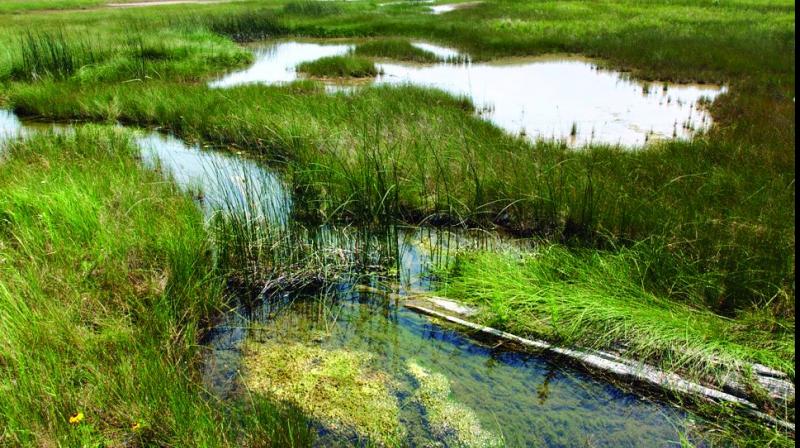More teeth for states to save wetlands

Hyderabad: After receiving the order from the Supreme Court to take a firm stand against the pollution and encroachment of wetlands, the Union ministry of Environment and Forest (MoEF) has decided to set up wetland committees for individual states. It has begun implementing this as well as other guidelines included in the Wetlands (conservation and management) rules of 2017.
Wetlands will henceforth be a state subject and states will have autonomy over the conservation of their flora and fauna. This is a step in the direction of fulfilling the promises ma-de in the Ramsar Conven-tion on Wetlands, to which India is a signatory.
A wetland is a natural area where water remai-ns, in either a static or a dynamic form, up to a height of 6 metres. It may also be manmade or artificial. Wetlands are critical to the maintenance of urban water tables and help in preventing floods. They also improve groun-dwater levels. These areas tend to be turned into garbage dump yards and landfills.
As per the government’s new policies, states are supposed to notify and prepare a digital inventory of their wetland areas within the next three months.
The last digital inventory was prepared in 2011, in undivided Andhra Prade-sh, by the Sálim Ali Centre for Ornithology and Natural History. It indicated that 1.35 per cent of the land under use in the state were wetlands. The inventory highlighted that there were many smaller wetlands, which were in use, which could not strictly be classified as wetlands.
According to the National Wetland Atlas of the MoEF, in Telangana state Nizamabad has the highest wetland cover. 4.78 per cent of its land, which amounts to 69,000 hectares. Hyderabad has 0.6 per cent, or 935 hectares, of wetlands cover.
Mr A. Shankaran, a retired senior official of the forest department, said, “Encroachment and pollution of wetlands, a problem all over the country. If wetlands are not managed in the right way, we will have urban floods as witnessed in Mumbai and Chennai. Just as forests are important, so are wetlands.”
He added that water sources in Hyderabad, including the Hussainsagar, the Mir Alam tank, Osmansagar, Fox Sagar, Durgam Cheruvu and Ameenpur Lake must be protected from the release of untreated sewage which can contaminate groundwater.
Dr Sateesh Suthari, a scientist at the University of Hyderabad, said, “We have studied over 350 lakes in the city, including the Ameenpur Lake, the Uppal Lake, and the Jawaharnagar Lakes, all of which are highly polluted. They must all be classified and protected.”

